The Budapest Aeropark is the most important aviation museum in Central Europe and one of the most visited museums in Hungary. Located a short distance from Ferenc Liszt International Airport, it is perfect to visit before catching your flight home. The Repülőmúzeum (Aviation Museum in Hungarian) will make you fly back in time, among Soviet-made aircraft and airport vehicles of the former Hungarian flag carrier Malév. In this article, you’ll find out how to organise your visit to the Budapest Aeropark and the must-do activities, such as the Airbus A320neo simulator and the airport tour.
Table of Contents
What to see at the Budapest Aviation Museum
Budapest Aeropark showcases nearly 70 years of Hungarian civil aviation history. It features a wide range of aircraft, including Soviet-made models from Malév, such as the Tupolev, Ilyushin, and Lizunov, as well as various airport service vehicles. If you’re an aviation enthusiast like my son and me, the Aeropark is a must-visit during your trip to Budapest.
PLAN YOUR TRIP TO BUDAPEST
Unlock the best of Budapest with the Budapest Card and enjoy free public transportation, access to the best museums, and relaxation at the famous Lukács Thermal Bath. For more info, read my review of the Budapest Card.
The best way to stay connected in Hungary is with a Holafly eSim, saving real money on data coverage. Finally, ensure your travels are worry-free by getting Heymondo travel insurance for essential peace of mind.

Aeropark Repülőmúzeum aircraft
The Budapest Aeropark is unique compared to other aviation museums in Europe. In fact, most of the aircraft on display here are Soviet-made, such as the iconic Tupolevs. In this museum, you can see all those planes that made aviation history in the Soviet area of influence before the fall of the Berlin Wall.
Russian-made aircraft never made it to Western Europe. After the end of the Cold War, in fact, the Soviet bloc countries adopted the aircraft produced in the Western bloc area, thus contributing to the unification of aviation standards.
The Tupolev Tu-134 is a military model converted to civil aviation after the end of the Cold War. You can recognise it by an unusual glazed pilot/navigator station in the lower part of the cabin. Once, a trained soldier could shoot at enemies during air battles. In most aircraft on display, controls in the cockpit are written only in Cyrillic.
Below are some models we saw during our visit to the Repülőmúzeum Airport Museum in Budapest, which are worth recognising. If in doubt, ask the museum staff. We interacted with lovely people who made our visit very special.
Jet planes
At Aeropark Budapest, you can see several jet planes, i.e. aircraft with a jet engine instead of a propeller. They were used in the past for short- and medium-haul flights. Many names won’t mean anything to you if you are not already an aviation enthusiast because they are all Soviet-made models. Although you won’t see any Boeing or Airbus, you will discover a completely different aircraft production featuring names such as Tupolev and Yakovlev!
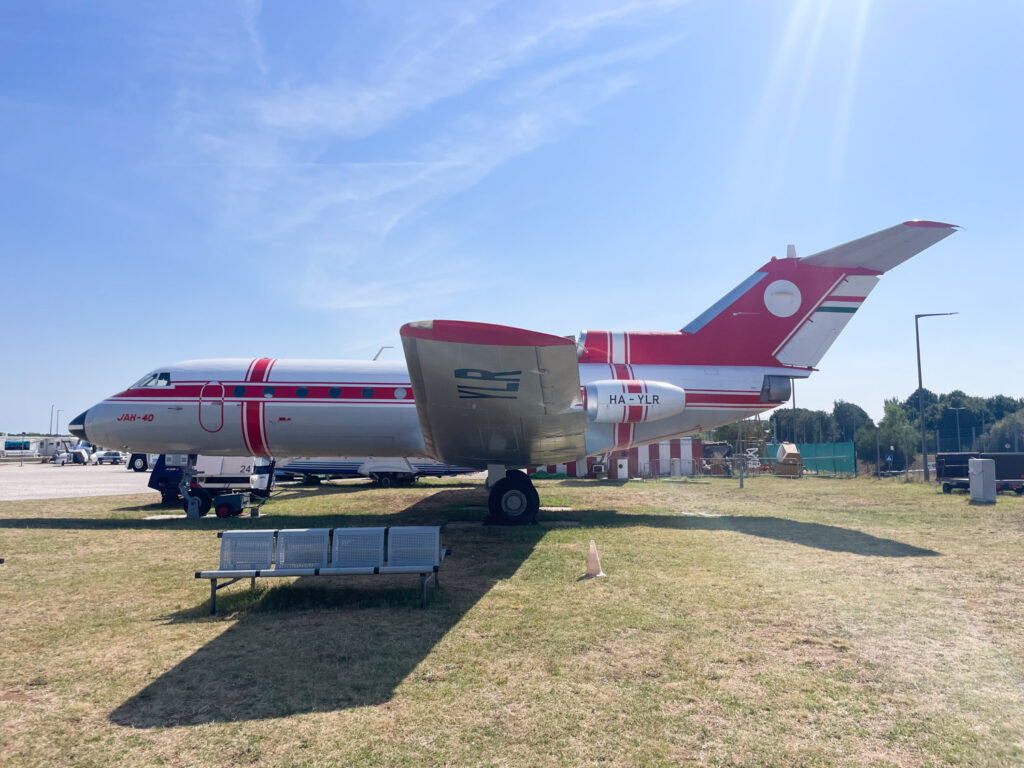
Among them, the Tupolev Tu-154 was a medium-haul passenger aircraft, very famous in its time because it boasted several firsts. It was the Soviet Union’s first jet aircraft and the first Malév’s plane to fly with a crew of three instead of five.
Another important model on display is the Tupolev Tu-134, used for short- and medium-haul flights. The military-derived Tu-134 was the first Soviet passenger aircraft to receive an international airworthiness certificate from the ICAO to fly in Western Europe. This aircraft gradually disappeared from European air traffic in the early 2000s due to the noise level of the D-30 engines. However, if you want to feel the thrill of boarding it, it is still used in some states of the former USSR and North Korea.
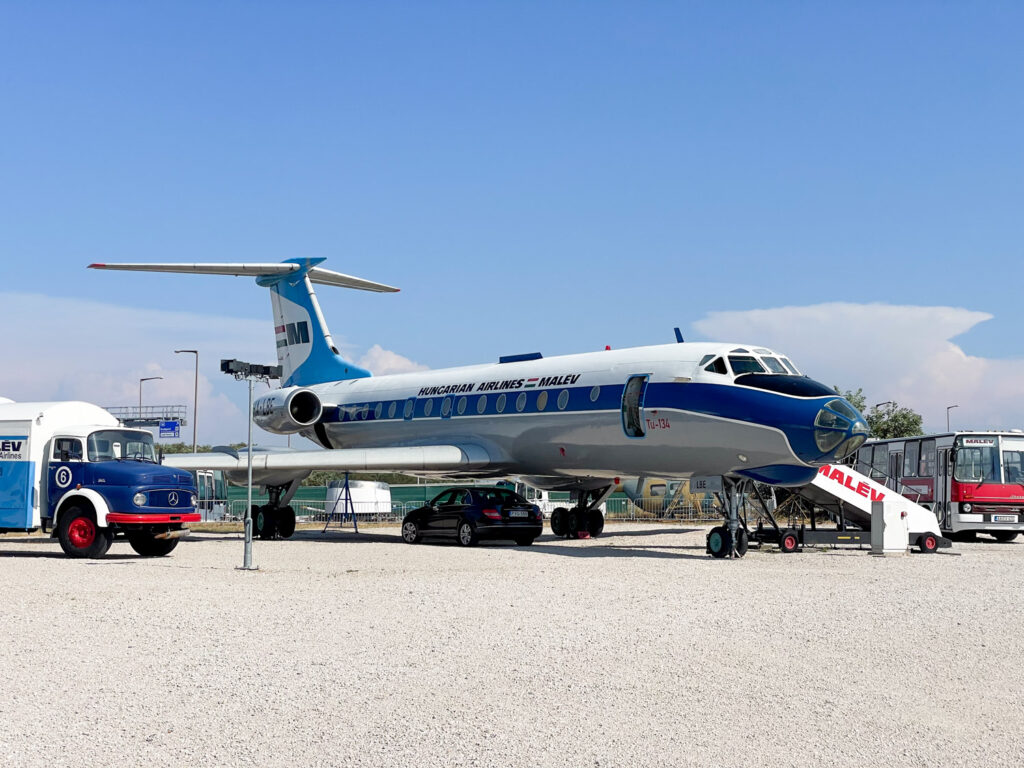
Propeller planes
At the Budapest Aeropark, you can see several propeller planes produced by the Soviet companies Ilyushin and Lisunov. Propeller planes are still widely used worldwide. In some cases, such as short runways or short flights, they are more suitable than jet planes. However, this is not the case with Ilyushin aircraft.
The Ilyushin Il-18, for example, was a passenger aircraft designed to meet Aeroflot’s need for a medium-range aircraft. Equipped with four propeller turbines, it did not have much luck in Malév. Three of the company’s eight Il-18s suffered in-flight accidents, while another stopped flying due to a ground collision.
Today, you can see the remaining four aircraft on display in various museums in Hungary, including the Aviation Museum in Budapest.
Compared to other exhibits, the Lisunov Li-2T aircraft looks much more comfortable. It was used for a long time by the Hungarian national airline Malév for passenger transport.
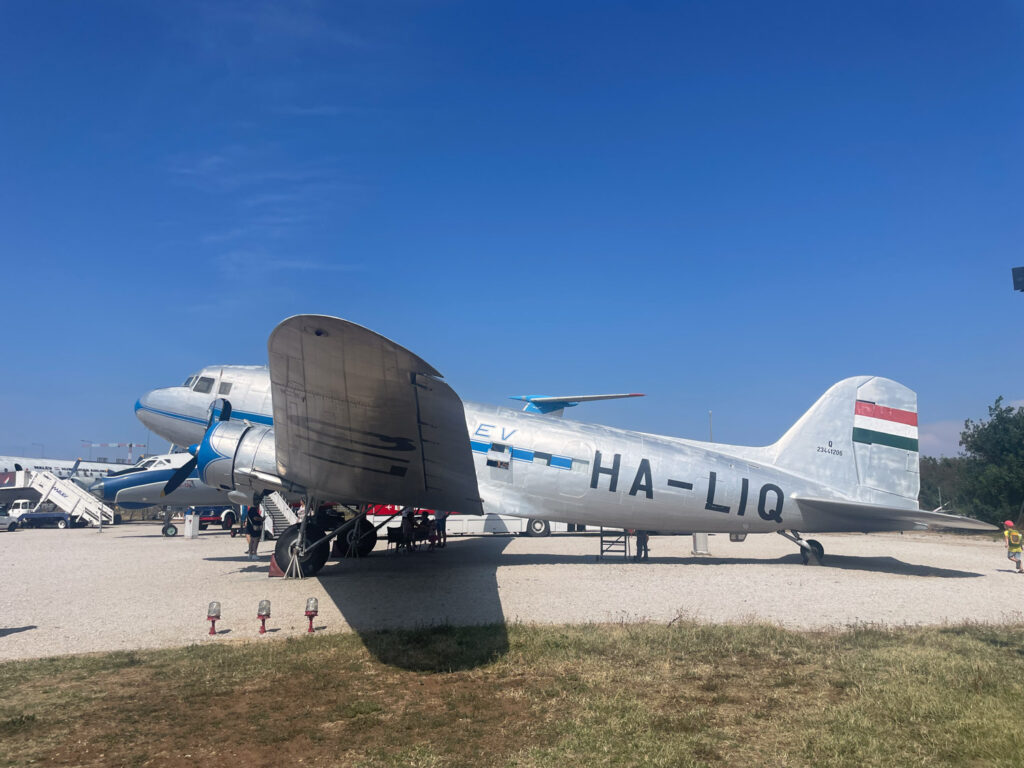
Biplanes
The Budapest Aeropark also houses biplanes. Among them, the Antonov Ha-MHI is the world’s largest single-engine biplane ever produced. Due to its robustness, simplicity and ease of maintenance, the Ha-MHI is still one of the most popular aircraft models used in agriculture in Hungary.
The Antonov Ha-YHF, on the other hand, was a single-engine biplane produced in the Soviet Union, Poland, and China. It was nicknamed Annuska by Soviet aviators and Ancsa in Hungary.
It was not considered modern even at the beginning of its production due to its double wing partially covered with canvas and non-retractable frame. Despite that, 16,200 examples were produced from 1947 to 2002.
Furthermore, both the Antonov Ha-MHI and the Ha-YHF can mount skis and floats to land on snow or waterways.
To be honest, I was very impressed to see these aircraft. Soviet production has always focused more on practicality and robustness than on comfort or modernity of the aircraft, unlike in the same years in the Western area of influence.
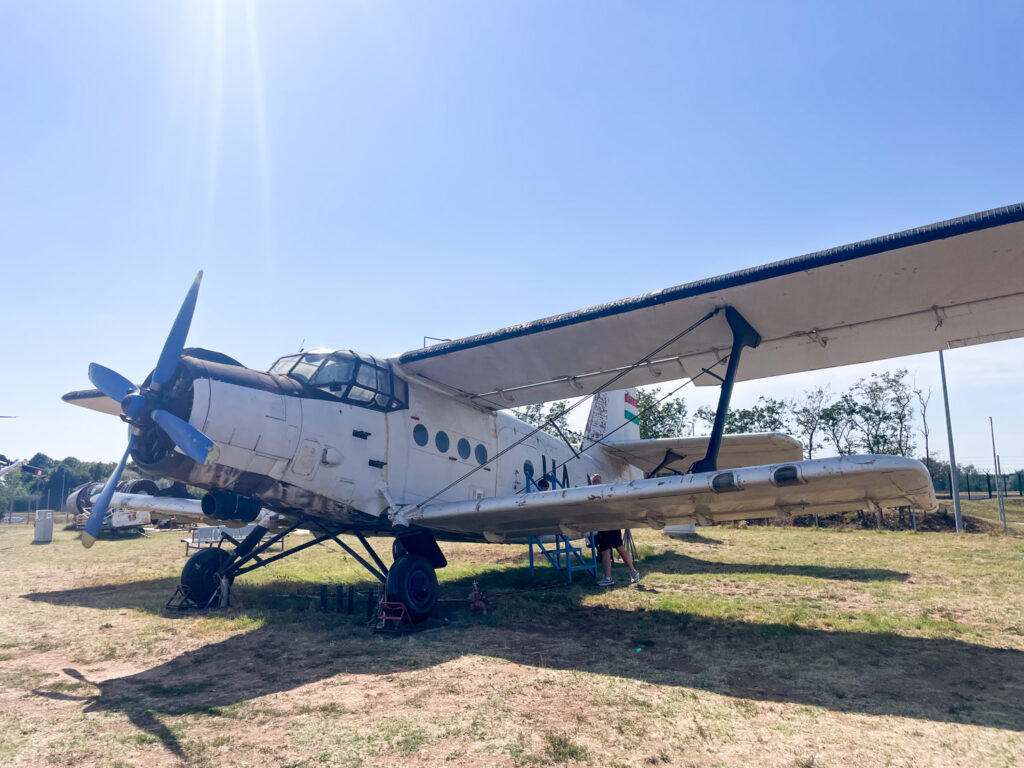
Helicopters
At the Budapest Aeropark, in addition to aircraft, you can also admire a selection of historical helicopters that further enrich the museum’s collection. Among them is the Kamov Ka-26, a Soviet twin-propeller helicopter designed for transport operations and aerial work. Other rescue helicopters, used for rescue missions and emergency response, are also on display.
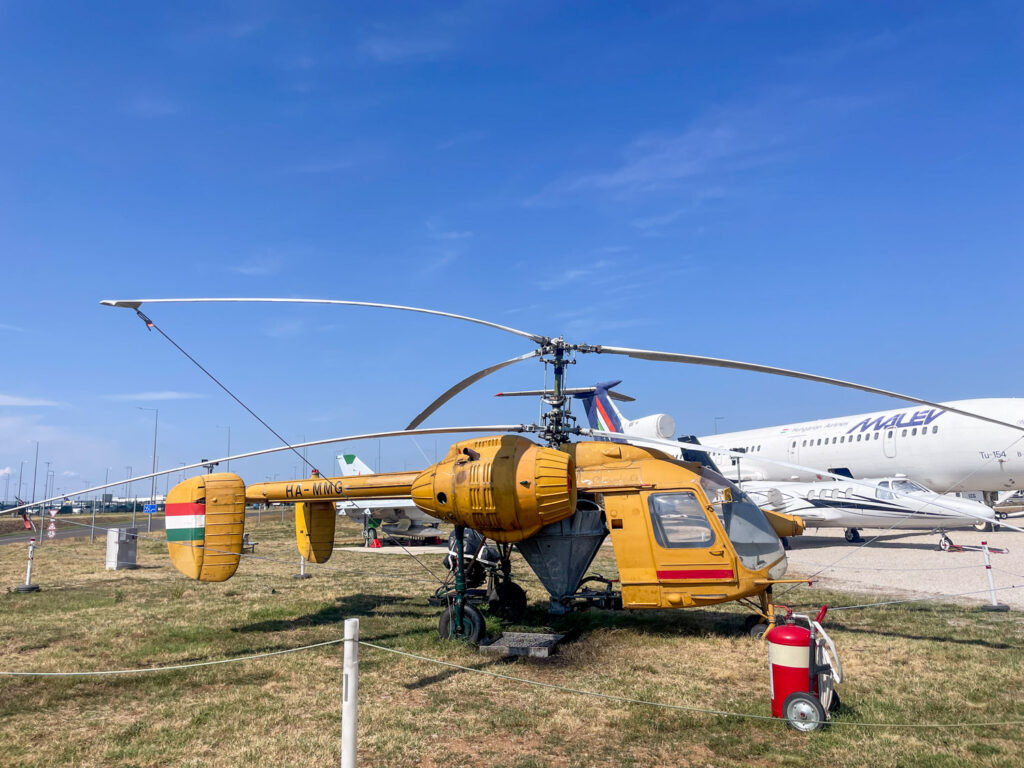
Airport service vehicles at the Aeropark
On display at the Budapest Aeropark there are also two fire trucks manufactured by the Austrian company Rosenbauer. Among them, you will immediately notice the Simba. This exceptional vehicle is intended exclusively for airport use, very similar to today’s emergency vehicles.
Put into service in 1984 when Ferihegy Airport expanded to open to international traffic, the Simba weighs almost 40 tonnes and is equipped with a high-performance water cannon. Its tanks can carry as much as 11,000 litres of water and 1,000 litres of foaming material.
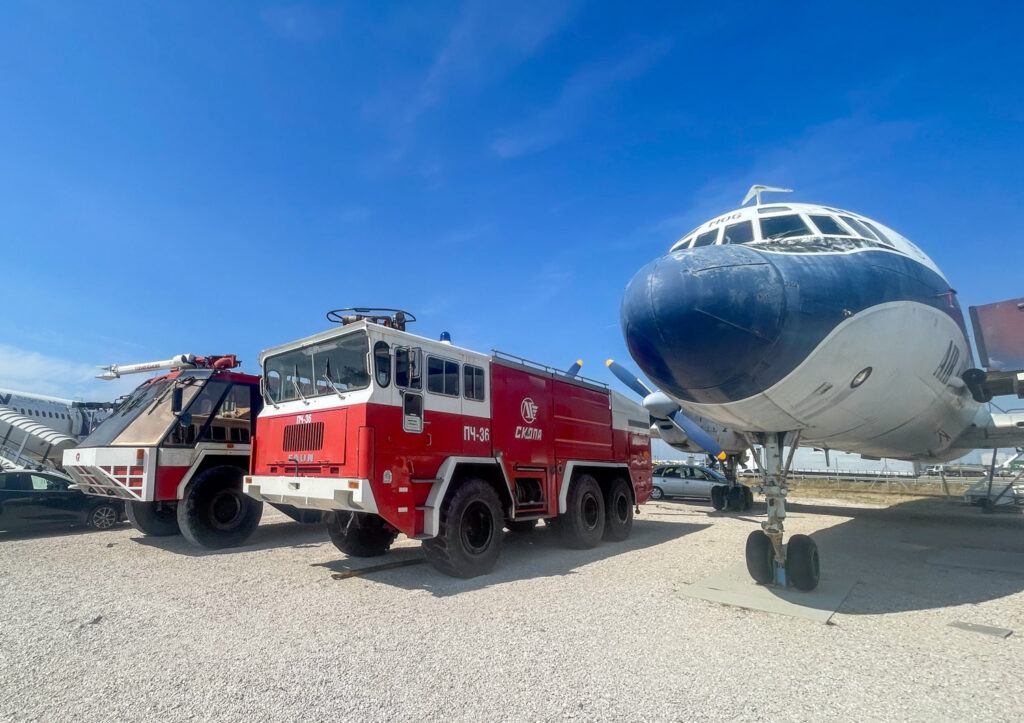
Another interesting vehicle at the Budapest Aviation Museum is the Hódgép Aerotrak airport tug, used for decades at Ferihegy Airport. Even today, the tugs are responsible for pushing aircraft to the taxiway (planes do not have reverse gear, except in rare cases) and towing those requiring maintenance to the hangars.
Finally, among the airport service vehicles in the Budapest Aviation Museum, you can see a fuel truck, passenger buses and cars, including a police car.
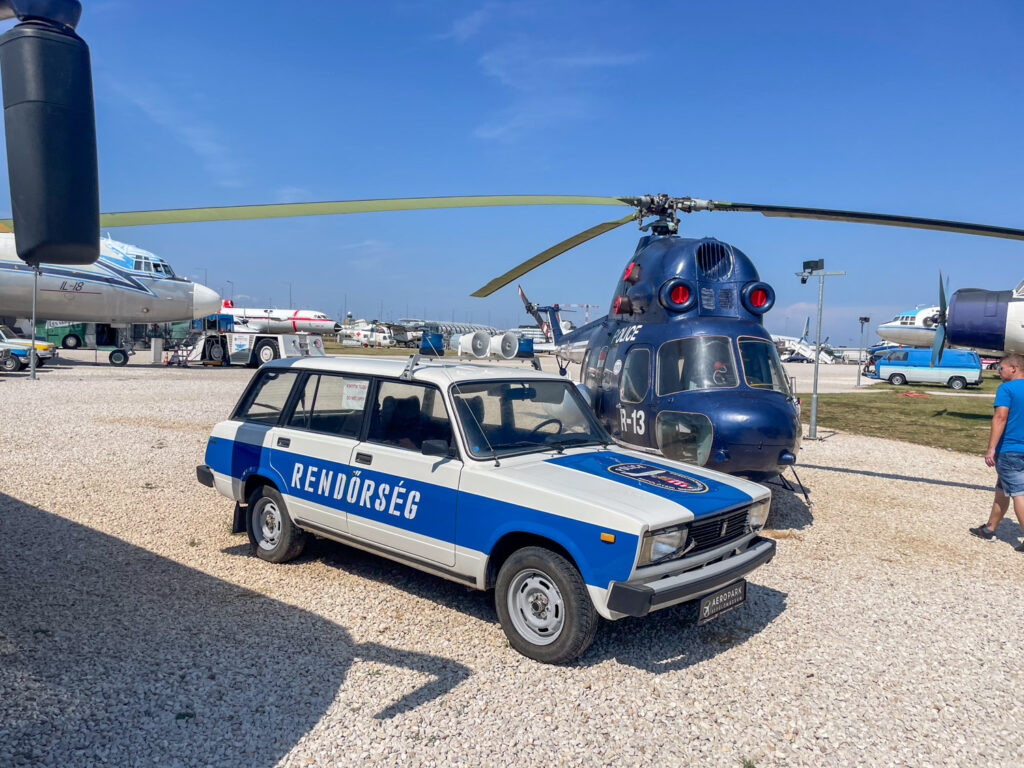
The permanent exhibitions: a journey through Hungarian aviation history
In the Aeropark, inside the passenger buses and some of the planes, there are very interesting permanent exhibitions that tell the story of Malév Hungarian Airline, and how air traffic and customs control work at the airport.
Malév Hungarian Airline
Inside the Il-18 aircraft, you can discover the story of civil aviation from the 1960s to the end of operations of the Hungarian national airline Malév, from the flight attendants’ uniforms to the destinations and goods transported.
In the cockpit, you can also learn how a crew of five worked. In the past, in addition to the two pilots, there was always a flight engineer, a navigator and a radio operator.
Air traffic and customs
Inside the buses used by Malév to take passengers on board, you can see displays explaining how air traffic controllers and customs used to work.
The bus marked HungaroControl is dedicated to air traffic control, with detailed explanations of how it worked. In another bus – not to be missed if you are a fan of the TV programme Airport Security – you can see an interesting display on seized goods, divided by origin and method of smuggling.
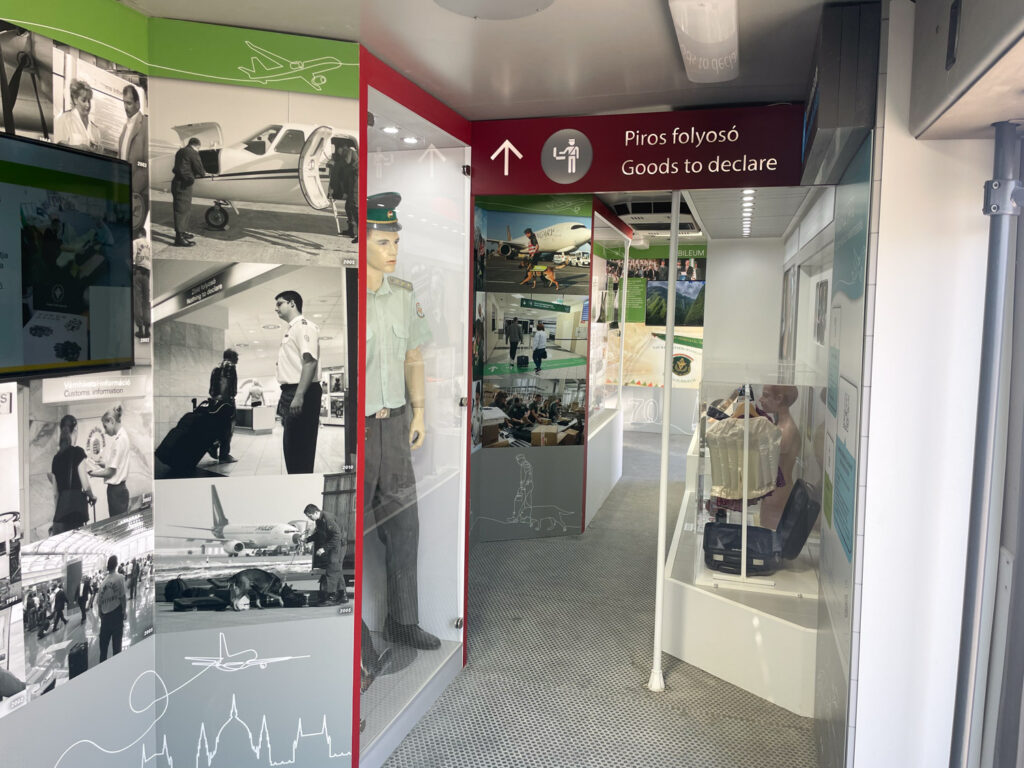
Activities at the Budapest Aeropark
One of the most fascinating experiences you can have at Aeropark is undoubtedly the airport tour. It takes you behind the scenes, revealing the workings of airport operations, from the service vehicles to the hangars. It is a rare opportunity to explore an airport from a brand new perspective, accompanied by expert guides.
Also, for aviation enthusiasts, you can board the Airbus A320neo simulator. It is one of the planes used by Wizzair, today’s leading Hungarian airline company, so you can experience the thrill of flying like an airline pilot. This simulation allows you to take control of one of the most modern aircraft in use today, providing a realistic experience that will make you feel on board a commercial aircraft.
If you are interested in these activities, I recommend you to check their availability and times on the site in advance, then ask the museum for confirmation to secure your place.
Useful information for visiting the Budapest Aeropark Aviation Museum
The Budapest Aeropark exhibits a collection of aircraft manufactured in the former Soviet Union, making it unique in Europe. The museum is entirely outdoors. I recommend dressing in layers, covering up well during the winter months, and bringing water, a hat, and sunscreen in the summer months.
Although the captions are only in Hungarian, the exhibition is still super interesting even if you don’t know the language, especially since you can board almost every plane.
At the time of writing, the airport tour on board the historic Malév buses is only available on weekends and by reservation. If you are interested, I recommend that you contact the Aeropark first.
Finally, the Budapest Aviation Museum has neither a restaurant nor a proper bar. There is only a small kiosk where you can find coffee and some packaged snacks. On the other hand, there is an outdoor picnic area with wooden tables where you can have lunch, if you bring sandwiches.
Allow two or three hours to see all the aircraft and permanent exhibits.
Personally, I recommend to visit Aeropark before catching your return flight from Liszt Ferenc International Airport, as it is close to Terminal 2. The museum does not have a luggage room, but if you have a small suitcase, you should have no problem leaving it at the entrance. We asked in advance by e-mail and there were OK.
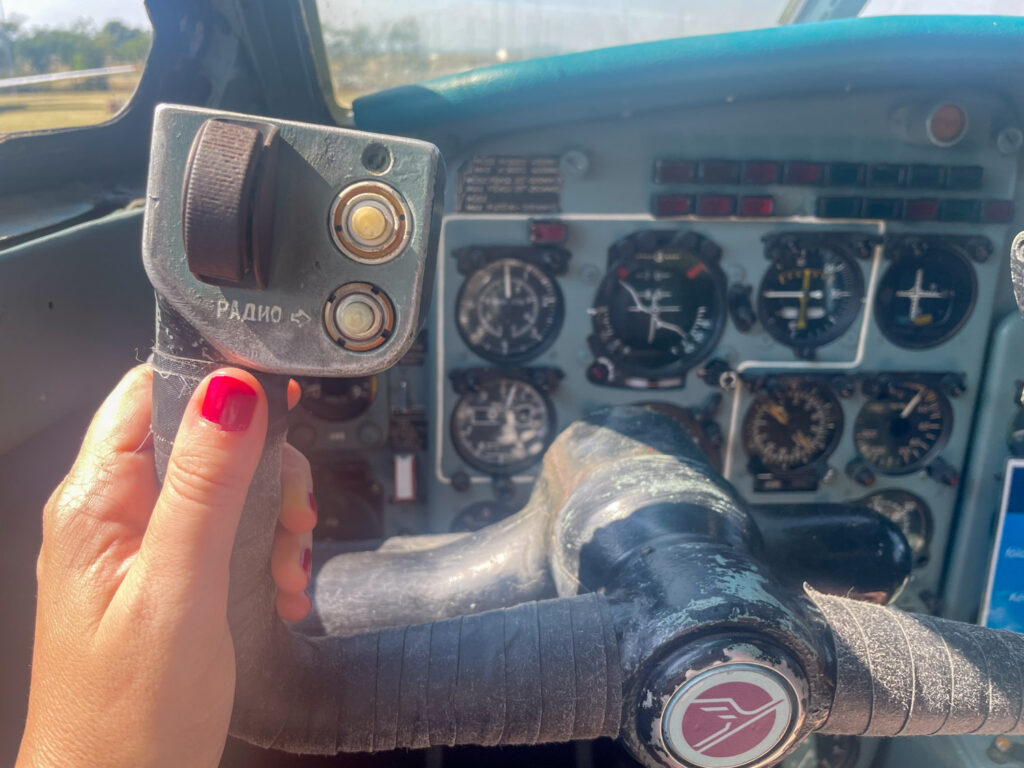
How much do Aeropark tickets cost
Tickets to visit the Budapest Aeropark are not particularly cheap as they cost as much as any major European museum. Hovewer, in my opinion, Budapest’s aviation museum is definitely worth a visit, especially for the chance to get on planes and sit in the cockpits. Boarding on the cockpit of real aircraft, in fact, is allowed only in very few museums in continental Europe.
At the time of writing, the ticket for adults costs HUF 3,200 per person, equivalent to about € 7.5, while the reduced ticket for children costs HUF 2,000, about € 5.
Children under 3 are entitled to free admission, and there are family and senior discounts. Before you go, I recommend you check the museum’s official website for any updated rates or special offers. During periods when you can expect large crowds, such as summer or holidays, I recommend booking in advance. I get along very well with GetYourGuide, and Aeropark tickets have the same price as the ticket office.
Opening hours of the Budapest Aviation Museum
The opening hours of Aeropark vary depending on the season.
- April, May, September, and October open daily from 9:00 AM to 6:00 PM
- High Season (June to August): Monday to Thursday: 9:00 AM to 6:00 PM. Friday to Sunday: 9:00 AM to 8:00 PM
- Winter Season (November and December): open daily from 9:00 AM to 4:00 PM.
You can find this schedule on the Aeropark website. However, I recommend always checking the opening hours before your visit. Don’t esitate to phone or e-mail the museum as they may change.
On my first trip to Budapest, for example, the Aeropark was only open on weekends despite it being January. Eventually I had to postpone my visit to the next trip.
How to get to the Aeropark Repülőmúzeum in Budapest
Aeropark is just a short walk from Terminal 2 of Budapest’s Ferenc Liszt International Airport. If you arrive directly from the airport, you can reach the museum by following a footpath connecting the two locations. The journey takes no more than 15-20 minutes on foot. In my opinion, this is the best way to reach the Aviation Museum. You can visit it before or after your flight to/for Budapest.
Alternatively, you can get to the museum from the city using public transport. If you take the 200E bus, get off at the Repülőmúzeum (Aviation Museum) stop in front of the museum entrance. From the centre of Budapest, you can opt for the 100E express line. This bus departs every 20 minutes from Deák Square and leaves you in front of Terminal 2 of Liszt Ferenc Airport, from where you can take the footpath to the Aeropark. Check my article How to Get Around Budapest: The Ultimate Guide to Public Transport for more info.
If you prefer to travel by car, follow the signs to the airport, then take the fourth exit off the roundabout near Terminal 2. Once you exit the roundabout, go straight ahead without turning right (where the airport’s parking spaces are). You will then find yourself in front of the museum entrance.
The Aeropark has a free car park for visitors, which is only available during museum opening hours. Outside these hours, the car park is closed.
Aeropark (Repülőmúzeum)
Budapest, BUD Nemzetközi Repülőtér, 1185 Hungary
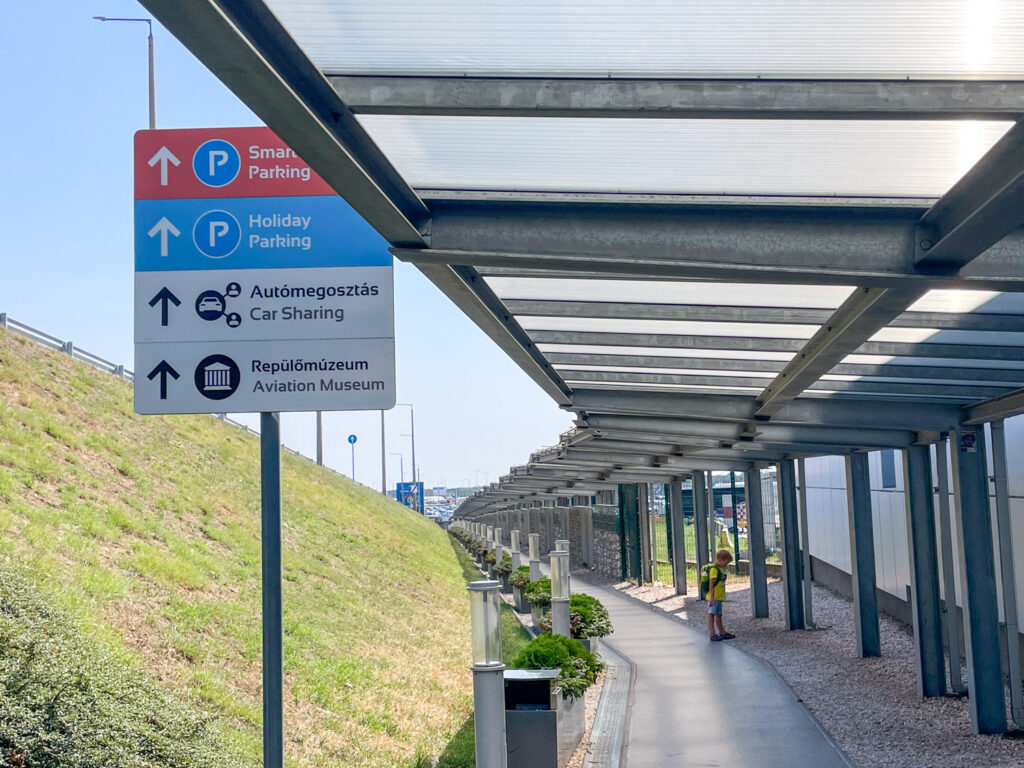
Where to stay in Budapest
Budapest offers a wide range of beautiful hotels to choose from. Hampton By Hilton Budapest City Centre (here my review) is located in the heart of Budapest, just 600 metres from St. Stephen’s Basilica. They offer a delicious breakfast and have a restaurant and a bar on-site. For those looking for a hotel with unique and stunning decor, Stories Boutique Hotel is a 4-star property situated 500 meters away from the Hungarian State Opera. They have a restaurant on-site that serves à la carte, a continental or vegetarian breakfast. If you prefer an aparthotel, Zoya Luxury Residence is an excellent option with units with a coffee machine, a dishwasher, a microwave and parking space.
Why visit Aeropark, the Aviation Museum in Budapest
Aeropark, the Aviation Museum in Budapest, is a truly unique museum. It is the only one in Central Europe where you can see an extraordinary collection of Soviet-made aircraft. Here you learn first hand the story of civil and military aviation from the Cold War era.
It is also an ideal destination for families, thanks to the possibility of boarding the aircraft on display. Kids will also love participating in the airport tour. My son and I loved this museum, and our visit was made even more enjoyable by the museum staff’s explanations.
Feel free to post a comment below to share your experience at Aeropark or if this article intrigued you enough to include it among the things to see on your trip to Budapest.
